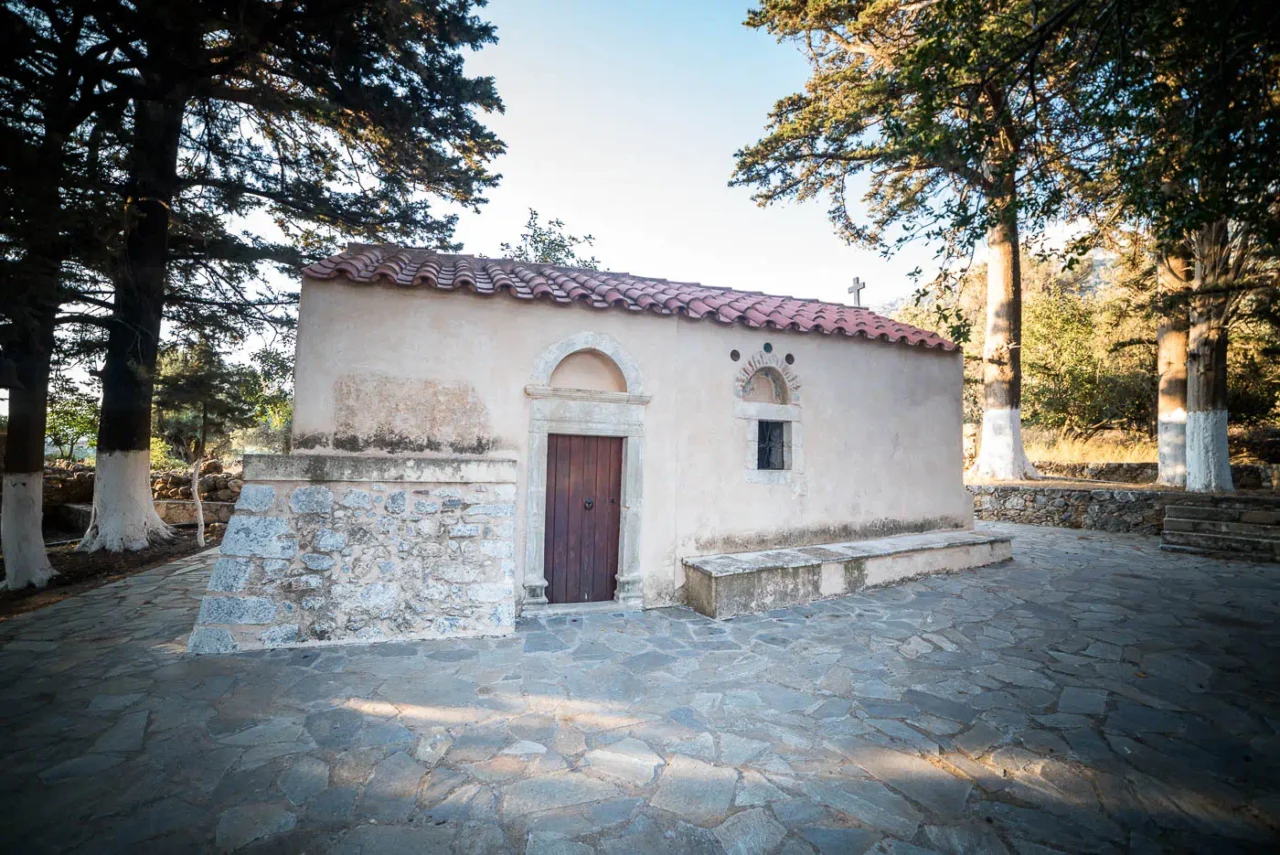
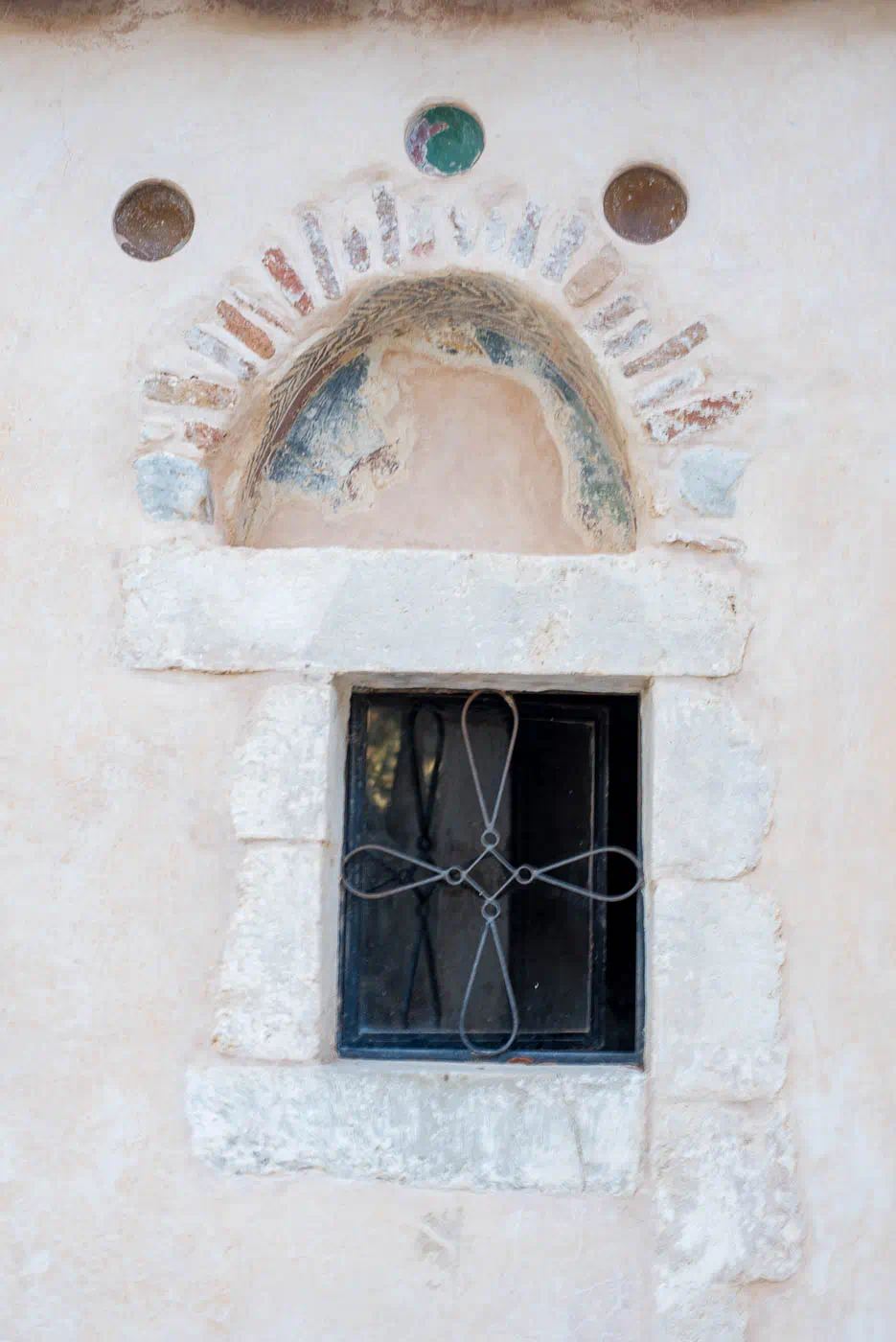
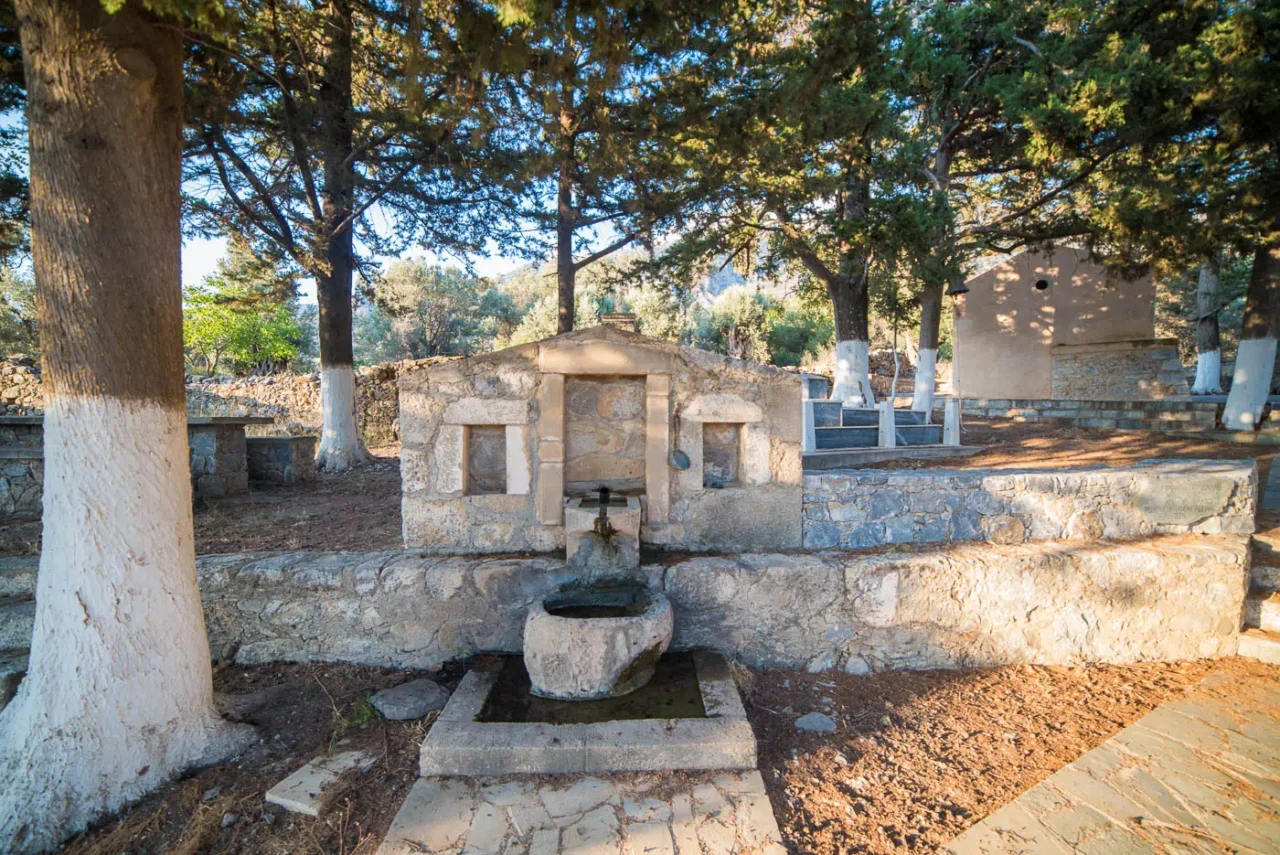
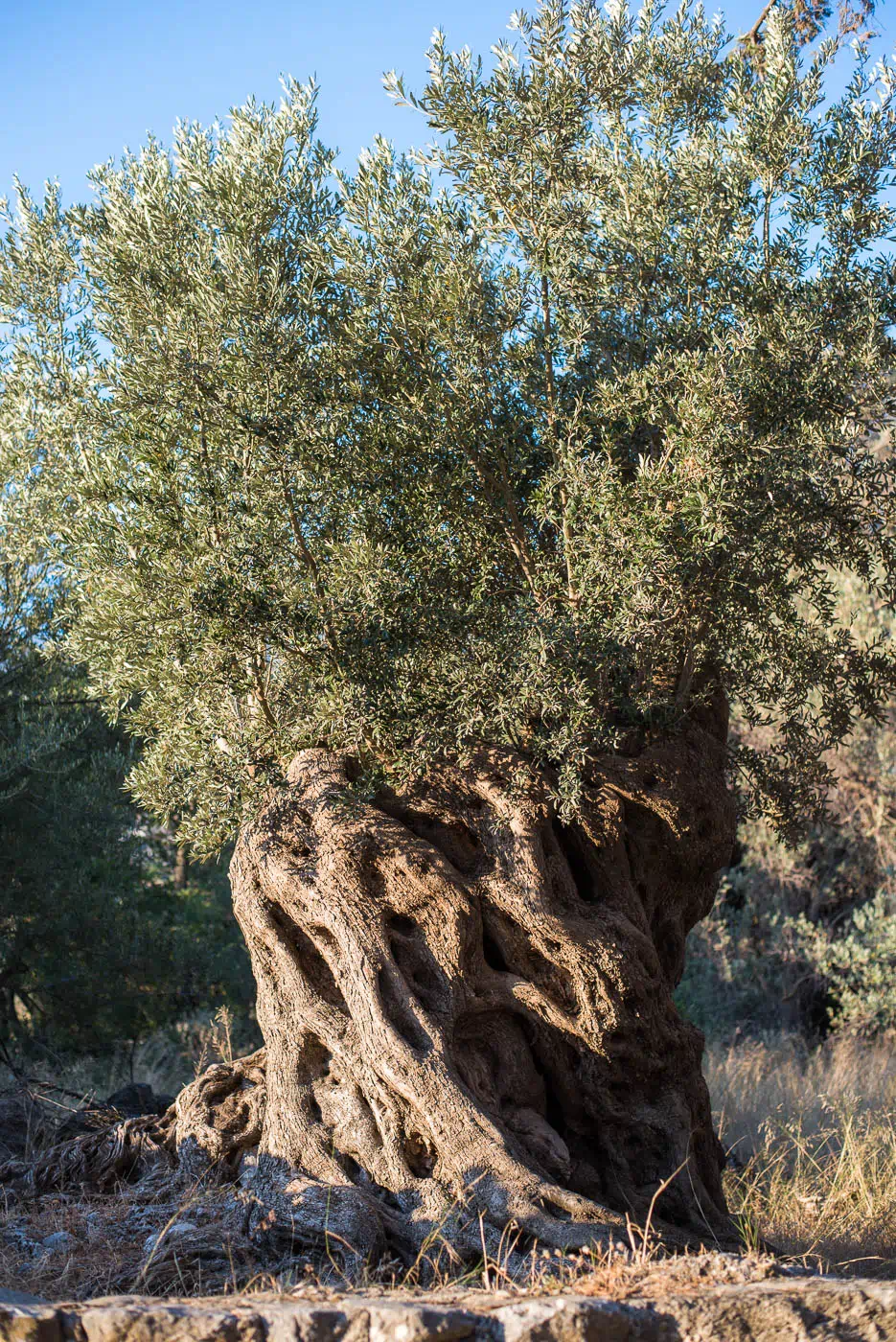
The Church of Panagia, also known as the Church of the Virgin Mary, is located in Livada, near the village of Fourfouras in the Amari region of Crete. The church sits on a slope below the road, surrounded by old olive groves, creating a serene and picturesque setting.
Architectural Features
The church is a small, single-aisled structure with a barrel-vaulted roof covered in Byzantine-style tiles. The original eastern section of the church houses the sanctuary and features a semicircular apse. The church was later expanded westward, likely in the early 19th century, as evidenced by the newer western entrance with its distinctive decorative elements. The walls are primarily constructed of rubble masonry with a plaster coating, while the corners, openings, and arches are reinforced with dressed stones. The south wall features a small, rectangular window and the main entrance, while the west wall has a circular skylight. The church’s simple yet sturdy construction reflects the traditional architectural style of Byzantine religious buildings in the region.
Interior and Frescoes
The interior of the church boasts a rich collection of 14th-century frescoes, remarkably well-preserved beneath layers of newer plaster. These frescoes, executed with vibrant colors and delicate lines, depict scenes from the life of Christ, the Virgin Mary, and various saints, following the traditional Byzantine iconographic program.
- Sanctuary: The apse showcases the Virgin Mary as the Blachernitissa, a powerful and revered image in Byzantine iconography. The conch of the apse likely once depicted the Lamb of God, but only fragments of the four Church Fathers remain.
- South Wall: The upper register of the south wall features scenes from the life of Christ, including the Nativity, the Presentation of Jesus at the Temple, and the Entry into Jerusalem. The middle register displays the Presentation of the Virgin Mary, the Baptism of Christ, and the Parable of the Ten Virgins.
- North Wall: The upper register of the north wall continues the narrative of Christ’s life with depictions of the Last Supper, the Betrayal of Judas, the Crucifixion, and the Ascension. The middle register focuses on eschatological themes, including the Harrowing of Hell and the Second Coming. The lower register showcases full-length figures of military saints, such as Saint Demetrius and Saint George.
- West Wall: Although the original west wall was demolished during the church’s expansion, it is believed to have featured scenes related to the Second Coming, complementing the eschatological themes on the north wall.
Historical Significance
The Church of Panagia holds significant historical value, reflecting the rich cultural and religious heritage of the Amari region. The presence of well-preserved 14th-century frescoes attests to the artistic flourishing and religious devotion of the Byzantine era in Crete. The church’s architectural evolution, with its later westward expansion, provides insights into the changing needs and practices of the local community over time. Additionally, the church’s association with the Arkoleo family, prominent figures in the region during the Venetian period, underscores its historical importance. A donor inscription found within the church confirms that Nicholas Arkoleo, a member of this influential family, financed the creation of the frescoes.
Current Status
Thanks to restoration efforts undertaken in 2006 by the 28th Ephorate of Byzantine Antiquities, the Church of Panagia is currently in a good state of preservation. The restoration work included the stabilization of the walls, replacement of damaged plaster, re-roofing, and cleaning and conservation of the frescoes. The church remains an active place of worship for the local community and a significant cultural attraction for visitors to the Amari region.
Key Information
- Construction Period: Original structure dates back to the 14th century, with a westward expansion in the early 19th century
- Location: Livada, near Fourfouras, Amari region, Crete
- Dimensions:
- Interior: Length 7.50 meters, width 2.70 meters, height 2.35 meters
- Historical Significance:
- Houses well-preserved 14th-century frescoes
- Reflects the architectural evolution of religious buildings in Crete
- Associated with the prominent Arkoleo family
- Linked to the Monastery of Kaloidena through the story of nun Mariam
- Current Status:
- Well-preserved due to restoration efforts
- Active place of worship and cultural attraction
Reference
The reference for the last embedded PDF is:
-
Varthalitou, Petroula. 2010. “The Church of Panagia at Fourfouras Amari.” In Archaeological Work in Crete 1, edited by Michalis Andrianakis and Iris Tzachili, 556-567. Rethymno: Faculty of Letters Publications, University of Crete.













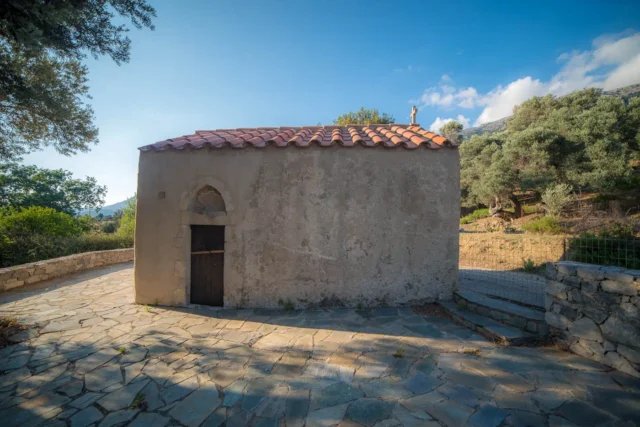

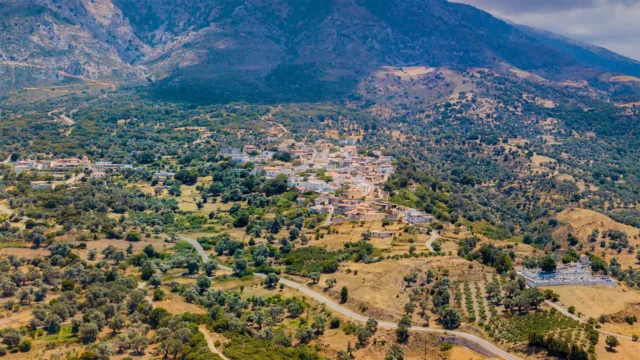


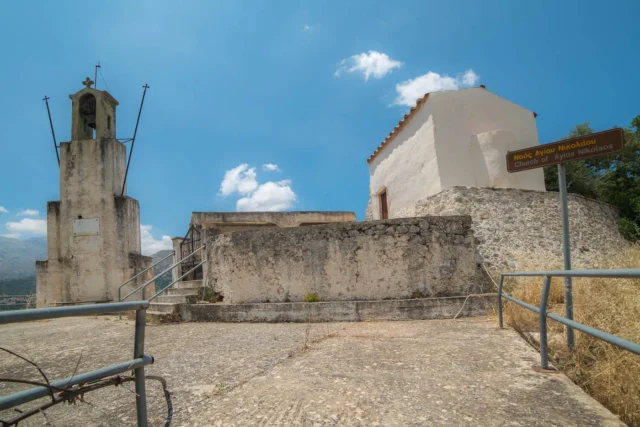
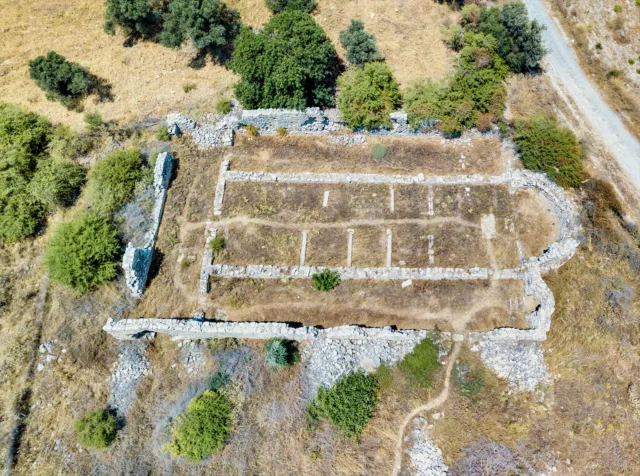

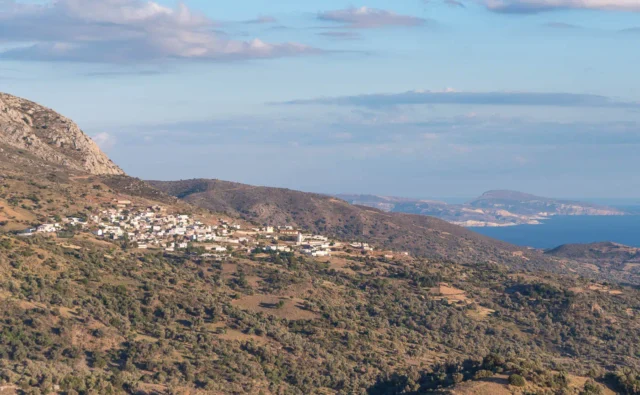
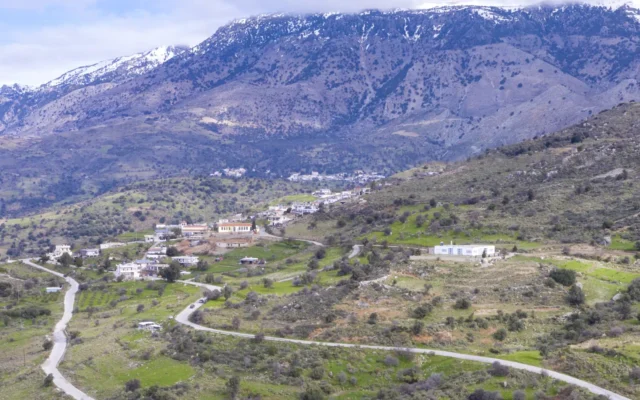

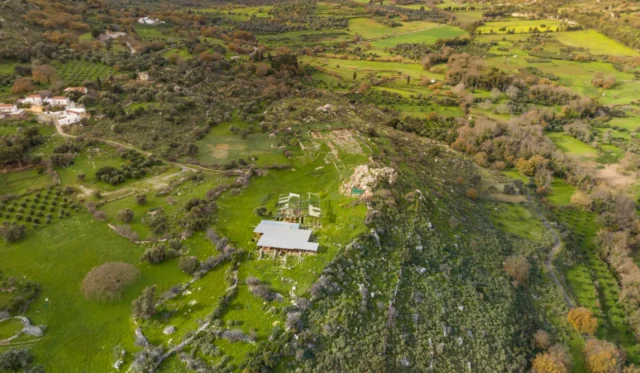
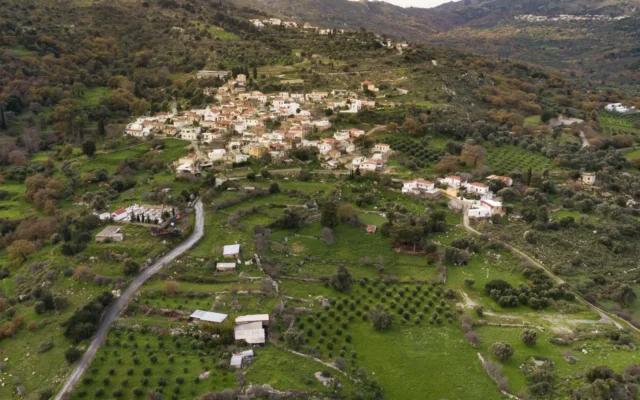
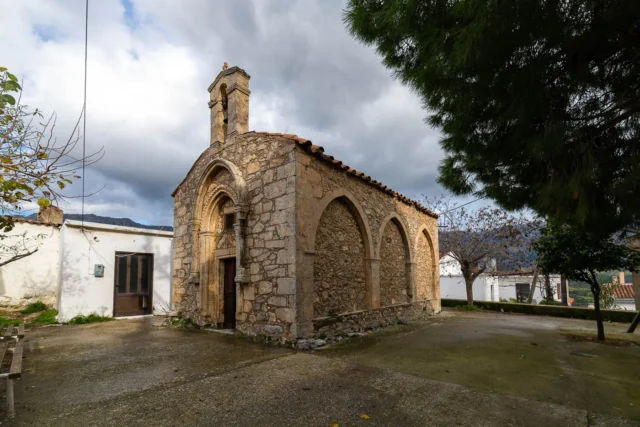

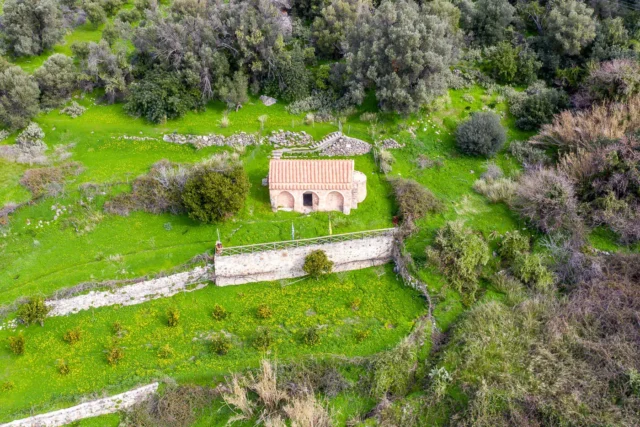
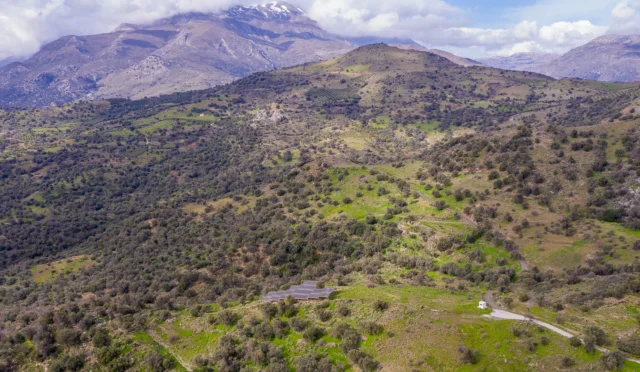
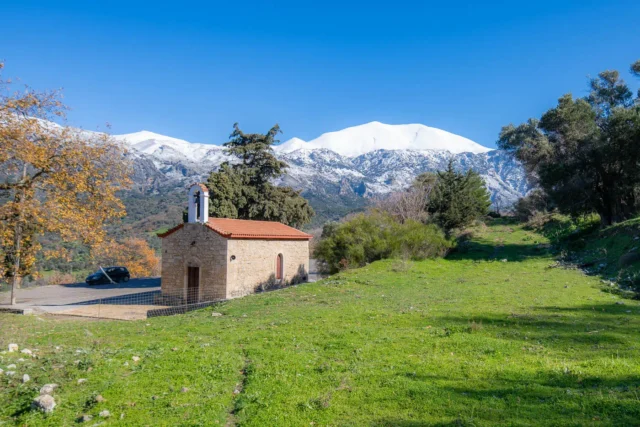

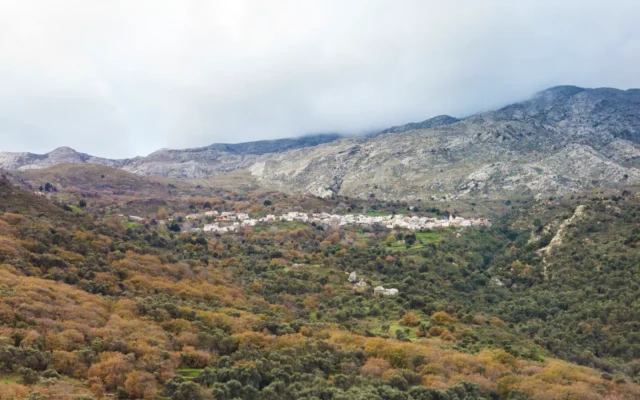

There are no comments yet.